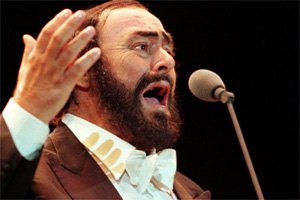Respiratory alterations
We call the cessation of breathing apnea. The most well-known is obstructive sleep apnea, in which the flow of air does not enter the superior airways correctly; a series of involuntary pauses follow one after another during respiration due to the relaxation and later blockage on the part of the muscles of the throat, soft palate and tongue.There is also the central apnea, which is related to a fault in the respiratory nerve center, which does not correctly regulate the rhythm and continuity of respiration. This affects newborns all the time, who die as they cannot continue breathing (crib death).
Pulmonary hypertension is another affliction that harms the exchange of oxygen. It is characterized by an elevated pressure of the pulmonary arteries and by the alteration of the work of the blood vessels housed within the lung.It causes fatigue and cardiac insufficiency because it also increases the size of the heart.
Acute respiratory insufficiency is a disease that occurs at an alveolar level in which alveoli are filled with fluids and secretions. The sacks (pouches) adapted to receive air cannot do so because their capacity is totally taken up by the liquid. At the beginning of the disease, the person suffers shortness of breath, which is followed by quick and shallow respiration. Then it evolves until almost totally preventing the operation of the lungs.
Respiratory maneuvers
Everything from manual procedures to advanced machinery serve to replace respiration for a few minutes or more prolonged periods. One of the most well-known manual mechanisms is mouth to mouth respiration, in which mouthfuls of air are attempted to be delivered to a patient that is not breathing through the exhalation of the re-animator. A direct transfer of air (as its name indicates, it is mouth to mouth) whose end is to stimulate the respiratory process and temporarily oxygenate the body.
Another mechanism that, although does not stimulate respiration, allows it, is the Heimlich maneuver, used in episodes of asphyxia by obstruction. Sometimes, the pharynx as well as the larynx or trachea can be blocked by a piece of food or some object, which prevents the arrival of air to the lungs.
One of the most effective mechanisms for the expulsion of the foreign body is said maneuver, which consists in an active role on the part of the re-animator, who must position him or herself behind the affected party, placing his or her fist at the level of the affected party’s diaphragm in order to strongly press and expulse the object by pressure.
Mechanical respiration
Medicine and technological advances have allowed the replacement, mechanically, of the coordinated work of the organs and tissues that enable respiration.
Mechanical ventilation’s (or respiration) objective is to maintain, normalize or manipulate the gas exchange, as well as increase the pulmonary volume and reduce the work of the respiratory muscles. One of the machines that performs this process is called mechanical ventilator, which achieves an effective entry and exit of gases. In general, it is used on critical patients, interned in intensive care or treatment units.
A widely used procedure to ease respiration is also the tracheotomy. It consists of, through a small surgery, performing a small incision in the neck, around the trachea, and placing a tube in this area which will serve to supply oxygen to the patient.
Oxygenotherapy corresponds to the administration of oxygen, at levels higher than those found in the environment, in order to treat respiratory insufficiencies or abnormal drops of the oxygen present in the tissues.







 Fallece Luciano Pavarotti
Fallece Luciano Pavarotti